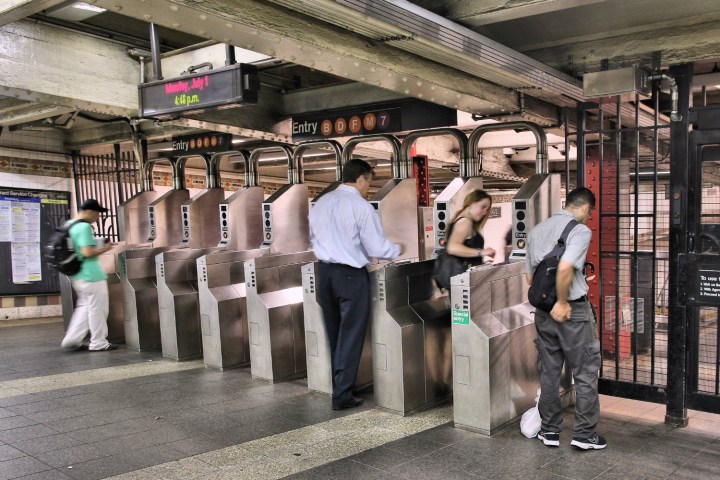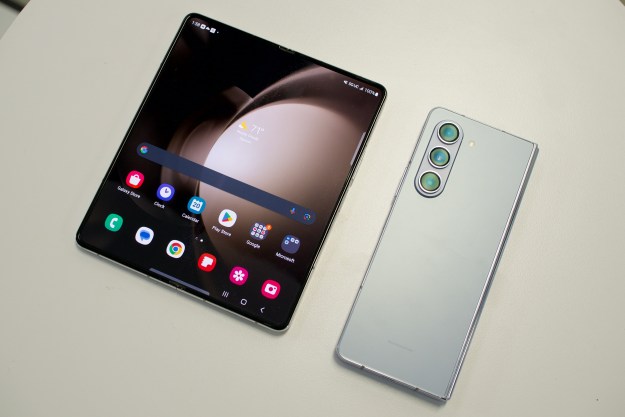
New York City is often called the greatest city in the world, but it’s a step behind when it comes to adopting new technologies. Take contactless pay for public transit, as an example. Commuters in quite a few cities around the world — such as London and Japan — have had the ability to tap and pay with a smartphone or contactless card to access public transit for years. Well, tap and pay for transit is finally coming to New York City, though it’s a bit limited at the moment.
Starting May 31, New York City’s Metropolitan Transportation Authority (MTA) is launching OMNY, a new fare payment system. It allows commuters to use near-field communication (
Unfortunately, the launch is relegated only to Staten Island buses and the 4, 5, and 6 subway lines between the Grand Central-42 Street and Atlantic Av-Barclays Ctr station stops. That’s a pretty limited rollout, especially when you consider the size of New York’s metro system. The MTA expects to expand OMNY to other lines throughout 2019, and rollout is expected to be available throughout the entire subway system and bus routes by late 2020.
Until then, you’ll still be able to use the existing MetroCard system to pay for transit, which will be available until 2023. If you’re worried about not being able to use cash in the future, the MTA confirmed that cash will always be an option to pay for transit. The OMNY system doesn’t support cash at the moment, though there may be a physical OMNY card in 2021 to help with this. An
You may have already seen new turnstiles on the 4, 5, and 6 subway lines supporting the OMNY system. They have a small area with the
The OMNY system works with most digital wallets, including Apple Pay, Google Pay, Samsung Pay, and Fitbit Pay. As for physical cards, American Express, Visa, and Mastercard all support OMNY, so if you have a contactless card from them, you’ll be able to just tap and go. You can request a contactless card from your bank if you don’t want to use a digital wallet.
The benefits of contactless payments in transit

Is the new OMNY system change for the sake of change? There are problems with the existing MetroCard system that OMNY directly addresses. Prakash Hariramani, director of Google Pay at Google, said using a digital wallet for contactless payments will directly add more convenience for riders, and the system will also be more secure.
“You don’t have to stand in line to buy a pass or ticket,” Hariramani said. “If you just add it to your phone, you can just tap and go.”
Lines can form up quickly at MetroCard ticket booths, which can cause people delays in getting on their train. Contactless options will help people avoid this problem completely.
Using your phone or a contactless card to pay for transit is also more secure than paying with a plastic card, according to Hariramani. He said digitizing your credit or debit card on your phone creates a virtual account number, and a unique one-time code is generated per transaction to ensure security. EMV chips on credit and debit cards are more or less equivalent in terms of security with digital wallets.
So what took so long?
If there are clear benefits, why did it take so long for contactless payments for transit to come to the U.S.? Hariramani said contactless payments is a two-sided challenge, as it requires people to use it and merchants to support it. Adoption in the U.S. has everything to do with muscle memory — around the world, banks began issuing contactless cards early on as the U.S. largely stuck with cash. The rest of the world was able to get used to the muscle memory of tapping to make payments for transit, which helped increase adoption of contactless payments elsewhere.
“We have found transit to be the catalyst use case to drive more adoption across other retailers,” Hariramani said. “We look at our experience in London; we’ve been live with TFL, which is Transport for London which is a major transit agency in the U.K., for quite a few years now. And there we found that people who started using Google Pay for transit carried that behavior forward for tapping at retailers.
Google found that tapping twice a day for transit helped build muscle memory, which enticed people to use the same motion to make payments at other venues.
“We have found transit to be the catalyst use case to drive more adoption across other retailers.”
“As we see more proliferation of mobile wallets or payments for transit, we think it’s going to have this multiplier effect where people will get into the habit and start using it more for retail transactions too,” he said.
It helps that most retailers upgraded their respective payment systems to support
Apple Pay Express Transit

You can use Apple Pay with public transit in several cities around the world, but the first U.S. city to get support was Portland, Oregon, on May 21, 2019. Apple Pay Express Transit Mode is a special mode that lets you just tap your iPhone or Apple Watch on the contactless terminal with no need to wake or unlock the device — that means no need to use Face ID or Touch ID. You can use Apple Pay without this mode to access transit, and this is available in a broader range of cities (including Chicago in the U.S.).
You’ll need to be on the latest software (iOS 12.3+ and watchOS 5.2.1+) to use Apple Pay Express Transit on both the iPhone and Apple Watch. It works with iPhone SE,
Google Pay

Google’s very own Google Pay, available on all
Google also added a feature that lets commuters ask Google Assistant when the next train is arriving by saying, “When is the next 4 train arriving,” as an example. You’ll then be able to see real time results instead of having to find a MTA display.
Samsung Pay

Samsung Pay is Samsung’s alternative to Google Pay, and it goes a step beyond as it works with Magnetic Secure Transmission technology (MST), which is what credit and debit cards use. It also supports
If you have a Samsung
Fitbit Pay

If you happen to have a Fitbit Charge 3 Special Edition, Fitbit Versa Special Edition, or Fitbit Ionic, you’ll be able to use Fitbit Pay to access OMNY. New York is hardly the first city to support Fitbit Pay as a transit payment option — it’s already available in Chicago, Vancouver, Singapore, Sydney, Taiwan, and London.
The MTA’s OMNY system begins rolling out in select areas of New York City starting May 31.
Editors' Recommendations
- In 2023, it’s time to finally ditch your real wallet for Apple Pay
- Take a look inside Google’s first-ever retail store
- U.K. to double Apple Pay and Google Pay contactless payment limit
